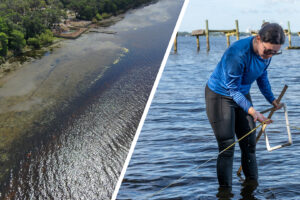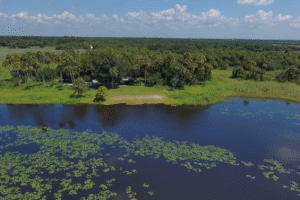We bring you butterflies on District lands
Searching for butterflies is akin to finding a favorite painting in an art gallery. Of course, right now the galleries are all closed. But that doesn’t stop us from sharing a few gorgeous butterflies photographed on St. Johns River Water Management District lands.
Once things get back to normal, searching for butterflies in beautiful settings may be just what you need. The District has more than 700,000 acres of public lands for you to explore, purchased to protect our precious water resources. Because Florida has the largest diversity of butterflies in the eastern United States, the odds of locating examples of fluttering eye-candy is in your favor. You’ll also earn the title of lepidopterist (an entomologist specializing in the study of butterflies and moths).
Late summer and fall are the best times to see Florida’s butterflies on the wing, but you’ll see them to a lesser extent throughout the year, thanks to our gentle climate.
We want to share a few of our favorites taken by staff as they conducted their work:
- The zebra (longwing) heliconian (Heliconius charitonius) is easy to identify with its black and narrow yellow stripes. You’ll spot this butterfly in woodlands, gardens, shrubby sites and parks. This is the state butterfly of Florida.
- The Palamedes swallowtail (Papilio Palamedes) is black with a ray of cream-yellow and a line of yellow spots along the edge of its wings. They can be tricky to photograph because adults continuously flutter their wings while they feed.
- The gulf fritillary (Agraulis vanilla) is found throughout Florida and over most of the southern half of the United States. It’s a fairly large butterfly with a wingspan of up to three and a half inches.
- The Queen butterfly (Danaus gilippus) is just slightly smaller than the Monarch. The Queen is an orange-brown color with white spots and black borders. It has similar colorations to the Soldier and Viceroy butterflies.
These butterflies — sighted on District lands — are just a sampling of the more than 50 colorful species featured on the Florida Museum website. You can use the museum’s butterfly search page to look up any other species you’re interested in viewing virtually. Remember, if you do head out to District lands near your home, keep a safe distance from other visitors you may encounter.





